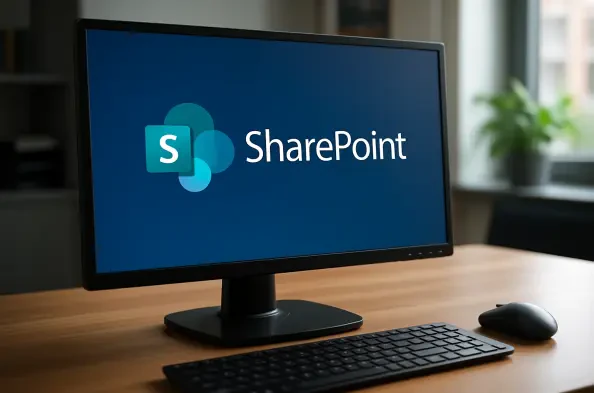The unprecedented SharePoint breach this year has served as a wake-up call for experts and organizations worldwide, unveiling significant vulnerabilities in legacy systems and underscoring the urgent need for more advanced cybersecurity strategies. The attack leveraged zero-day vulnerabilities (CVE-2025-53770 and CVE-2025-53771), allowing malicious actors to infiltrate systems, execute unauthorized code, and access sensitive cryptographic keys. This incident has prompted a reevaluation of current cybersecurity infrastructures, steering the focus towards more proactive and comprehensive measures.
The Vulnerability of Legacy Systems
Challenges of Reactive Approaches
Historically, cybersecurity efforts leaned heavily on reactive methods, relying on timely patch releases and updates to protect against known threats. These practices, however, often fall short in dealing with sophisticated zero-day vulnerabilities that exploit previously undetected weaknesses. The SharePoint breach vividly demonstrated that waiting for vulnerabilities to be identified before deploying patches can lead to catastrophic failures. This reactive posture is increasingly inadequate as threats become more advanced and elusive.
Proactive cybersecurity measures, such as regular cryptographic key rotation and AI-enhanced endpoint detection and response (EDR), have emerged as essential components. These strategies aim to anticipate potential threats and mitigate them before they can be exploited. Implementing AI-driven EDR solutions enables constant monitoring and real-time threat intelligence, significantly improving an organization’s defensive capabilities. By recognizing patterns and behaviors indicative of potential threats, organizations can preemptively halt attacks, even those exploiting zero-day vulnerabilities.
Benefits of Zero-Trust Architectures
As organizations gravitate away from reactive methods, zero-trust architectures have gained prominence as a frontline defense strategy. Zero trust operates on the principle that no user or device, whether inside or outside the organization’s network, should be automatically trusted. This framework mandates verification at every stage, significantly reducing the potential for breaches by rigorously controlling access to sensitive data and systems.
The zero-trust approach is supplemented by artificial intelligence, which enhances its effectiveness through advanced analytics and decision-making capabilities. AI can identify unusual activities and behaviors, enabling faster response times to potential security incidents. This proactive identification is crucial in today’s threat landscape, where the speed and sophistication of attacks can quickly overwhelm traditional defenses. By implementing zero trust, organizations can create a more secure environment, safeguarding sensitive information from unauthorized access.
The Rise of AI in Cybersecurity
AI-Driven Innovations in Threat Detection
The SharePoint breach has accelerated the adoption of AI in cybersecurity, with firms like CrowdStrike and Palo Alto Networks leading the charge. These companies have integrated AI and machine learning into their cybersecurity solutions, creating platforms that can detect and respond to threats with unparalleled speed and accuracy. AI-enhanced systems can process vast amounts of data, identify anomalies, and respond in real time to mitigate risks before they escalate.
This shift toward AI-driven security is also fostering innovation in zero-day attack mitigation. Advances in behavioral analytics allow systems to recognize and address previously unseen threats, providing a dynamic and adaptive defense mechanism. As AI continues to evolve, it is expected to offer even more robust solutions, raising the cybersecurity bar and setting new industry standards. This transformation is vital to ensuring that organizations can keep pace with the evolving nature of cyber threats.
Implications for Investment and Development
The transition to AI-driven cybersecurity not only revolutionizes defense strategies but also creates significant opportunities for investment in technology firms with strong AI and automation capabilities. The focus is shifting from traditional perimeter-based defenses toward identity-centric solutions that leverage AI for comprehensive security. Companies like Microsoft remain key players due to their integrated security offerings, while third-party platforms such as SentinelOne and Zscaler augment these strategies with automated patching and real-time device verification.
Investors are urged to monitor regulatory trends like the Cybersecurity and Infrastructure Security Agency’s Known Exploited Vulnerabilities (KEV) catalog and to diversify their portfolios across AI-driven EDR and zero-trust frameworks. Firms with strong research and development pipelines in AI and automation are poised for long-term growth, promising substantial returns in an increasingly digitized world. The integration of AI in cybersecurity not only protects critical assets but also drives innovation and competitiveness in the market.
Navigating the Evolving Cybersecurity Landscape
Broader Industry Implications
The SharePoint breach is a stark reminder of the inherent challenges in safeguarding digital infrastructures against rapidly evolving threats. Organizations are compelled to rethink their traditional security models, embracing advanced technologies to secure their networks. This evolution signifies a paradigm shift from static defenses to dynamic, AI-integrated strategies capable of adapting to new, unforeseen challenges. Companies adopting these forward-thinking approaches will likely emerge as leaders in this new cybersecurity era.
As the industry aligns with these trends, the demand for skilled cybersecurity professionals who can implement and manage AI-driven solutions is increasing. Education and training programs are being revamped to equip future experts with the necessary skills to meet these challenges. Consequently, a new workforce is emerging, capable of navigating and safeguarding the digital frontiers against an array of sophisticated threats. A successful adaptation to these advancements will ensure robust security and safeguard against future incidents.
Future Course of Action
The recent SharePoint security breach has been a wake-up call globally for experts and organizations, highlighting critical flaws in older systems and emphasizing the necessity for advanced cybersecurity tactics. Exploiting zero-day vulnerabilities, identified as CVE-2025-53770 and CVE-2025-53771, attackers penetrated systems, executed unauthorized code, and compromised sensitive cryptographic keys. This incident has compelled a reconsideration of current cybersecurity frameworks, driving attention toward developing and implementing preventive and holistic strategies. In the aftermath, organizations are being urged to adopt technologies that are agile and capable of anticipating threats, rather than merely reacting to them. The need for continuous monitoring, regular updates, and strategic planning in cybersecurity has never been more apparent, as the digital landscape evolves with complex and sophisticated challenges. This breach underlines that vigilance and adaptability are crucial for thwarting potential future attacks.






